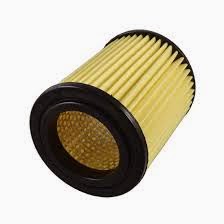The
last thing any driver needs is to break down in cold, harsh winter
weather. A vehicle check now before winter arrives is a sensible way to
be car care aware and avoid the inconvenience of being stranded out in
the cold and with the unexpected expense of emergency repairs, says the
Car Care Council.
“Winterizing your vehicle before the temperatures drop is a wise idea,” said
Rich White, executive director, Car Care Council. “An investment of an
hour or two to have your vehicle checked is all it takes to have peace
of mind and help avoid the cost and hassle of car trouble during severe
weather.”
The Car Care Council recommends the following steps for winterizing your vehicle:
- If you’re due for a tune-up, have it done before winter sets in. Winter magnifies existing problems such as pings, hard starts, sluggish performance or rough idling.
- Have the battery and charging system checked for optimum performance. Cold weather is hard on batteries.
- Clean, flush and put new antifreeze in the cooling system. As a general rule of thumb, this should be done every two years.
- Make sure heaters, defrosters and wipers work properly. Consider winter wiper blades and use cold weather washer fluid. As a general rule, wiper blades should be replaced every six months.
- Check the tire tread depth and tire pressure. If snow and ice are a problem in your area, consider special tires designed to grip slick roads. During winter, tire pressure should be checked weekly.
- Have the brakes checked. The braking system is the vehicle’s most important safety item.
- Have the exhaust system checked for carbon monoxide leaks, which can be especially dangerous during cold weather driving when windows are closed.
- Check to see that exterior and interior lights work and headlights are properly aimed.
- Be diligent about changing the oil and filter at recommended intervals. Dirty oil can spell trouble in winter. Consider changing to “winter weight” oil if you live in a cold climate. Have your technician check the fuel, air and transmission filters at the same time.
Motorists
should also keep the gas tank at least half full at all times to
decrease the chances of moisture forming in the gas lines and possibly
freezing. Drivers should check the tire pressure of the spare in the
trunk and stock an emergency kit with an ice scraper and snowbrush,
jumper cables, flashlight, flares, blanket, extra clothes,
candles/matches, bottled water, dry food snacks and needed medication.
The
Car Care Council is the source of information for the “Be Car Care
Aware” consumer education campaign promoting the benefits of regular
vehicle care, maintenance and repair to consumers.
Reference Links:
1) For more information, visit www.carcare.org











